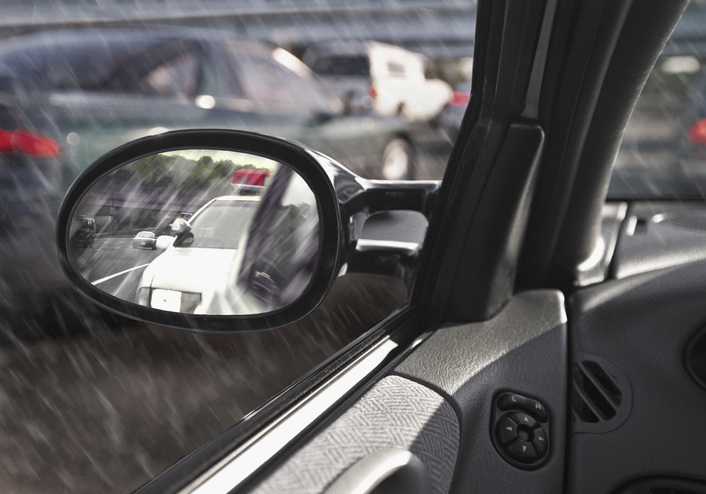Now that school bus stop-arm cameras were approved and will soon start catching drivers illegally passing stopped busses, a similar system aimed at recording motorists improperly passing stopped police vehicles could be next.
That’s because New York State lawmakers are considering a bill that would authorize law enforcement to install photo equipment on police cars to generate summonses that get mailed home to drivers who violate the law against not moving over or slowing down for stopped emergency vehicles. It’s essentially a red-light camera program for the Move Over Law.
“The only way to correct dangerous driving behavior is making people understand that there are consequences,” says Charlie Degliomini, executive vice president of government relations and corporate communications for Rekor Systems Inc., a company that makes the move-over cameras.
Rekor has been shopping the system around to police departments nationwide. Besides New York, Maryland is the only other state where such a proposal is under consideration, although the idea has been informally discussed elsewhere, Degliomini says.
As for the need, he cites a study that found 70 percent of drivers nationally were unaware of the move-over laws. New York State’s law went into effect in 2012 and was designed to protect officers from being fatally struck by cars while performing roadside traffic stops. When Rekor equipped two police cars with their devices in Suffolk County for two weeks in a study last winter, they found 2.3 violations per minute — significantly higher than the national average of one violation per minute, the company says.
“The findings pretty much confirmed what we’ve seen in many other studies,” says Rod Hillman, president and chief operating officer of Rekor.
Should move-over cameras pass in Albany after the state legislative session resumes in January, the measure would be an expansion of the photo-enforcement trend that includes red-light cameras, school zone speed cameras — repealed on Long Island, but still used in New York City — and bus lane cameras, also in use in the city. State lawmakers are also considering a bill that would authorize construction zone speed cameras.
Critics have called such traffic-enforcement cameras intrusive and a ploy for lawmakers to plug budget gaps in the name of public safety. Jason Starr, the former Nassau County chapter director of the New York Civil Liberties Union, has said that such traffic-enforcement cameras need safeguards to ensure there are no abuses of driver data in order to strike a balance between public safety and privacy rights.
“You can capture all types of data about someone that has nothing to do with public safety,” Starr has said of photo traffic-enforcement cameras. “They have to have some protections there for the data.”
Degliomini notes that without photo enforcement, there’s no way to enforce the move-over laws unless there’s a second police officer monitoring another’s traffic stop who can chase down violators, which isn’t always an option.
While red-light cameras, speed cameras, and bus camera laws are clear-cut, the move-over law has a little more ambiguity. The law requires that drivers change lanes to give space to emergency and service vehicles performing roadside operations, but if drivers are unable to safely change lanes due to traffic, they’re required to slow down. So the move-over camera takes video footage of both lanes of traffic to see if drivers followed the law, and also tracks their speed.
“If there’s a wide-open lane and you couldn’t move over, then it’s a violation,” says Hillman. “Any one of these violations has to be reviewed and ultimately signed off on by a sworn officer.”
Unlike the speeders and lawbreakers they’re trying to stop, Hillman and Degliomini aren’t in a rush to get the move-over camera laws passed.
“As we see with the school bus [stop-arm cameras], even though it took many years, we hope that it will be a much more prominent thing,” Hillman says.



































